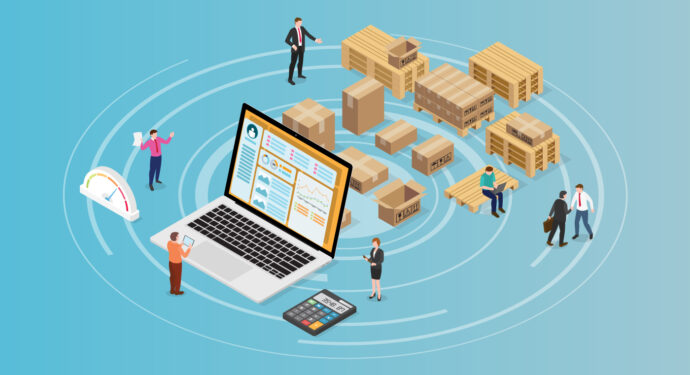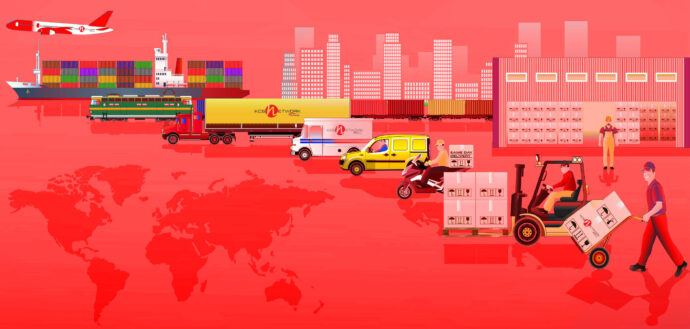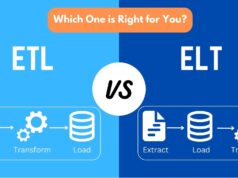The world is changing, and changes are always positive if you know how to take advantage of them. Some of us have become so entrenched in what we know best and in ancient traditions that we are scared to alter or engage in change. In today’s post, you’ll learn how a little tweak in one of your daily routines may benefit you, your business, and your time.
In today’s fast-paced world, the transportation industry is critical in linking businesses and people all over the world. With increased demands for on-time delivery, logistics efficiency has become a vital component. Logistic Software has changed the sector in recent years, allowing businesses to simplify operations, cut costs, and improve customer satisfaction. This essay delves into the power of logistics software, its advantages and disadvantages, and the transformational influence it has on the transportation business.
In essence, logistics is the management of the movement of products and services from the point of origin to the point of consumption. Effective logistics is critical for organizations to remain competitive in a worldwide environment. Traditional logistics operations were time-consuming and error-prone because they depended significantly on manual coordination. However, the introduction of logistics software has altered the way logistics operations are run, providing the sector with exceptional efficiency and precision.
Benefits of Logistics Software

Enhanced Efficiency
By automating numerous procedures, logistics software allows businesses to optimize their supply chain operations. Route planning, order management, inventory control, and freight monitoring are all part of this. Logistics software boosts productivity by reducing human mistakes and optimizing operations, resulting in faster order processing and shorter lead times.
Cost Savings
Efficient logistics management saves money. Companies may use logistics software to improve their transportation routes, consolidate shipments, and cut fuel use. Furthermore, real-time visibility into inventory levels aids in the prevention of overstocking and stockouts, lowering carrying costs and maximizing warehouse space use.
Improved Customer Satisfaction

Customer satisfaction is dependent on timely and accurate deliveries. Customers may watch the status of their goods using logistics software, which provides real-time tracking and delivery alerts. Furthermore, effective logistics operations assure on-time delivery, which contributes to excellent client experiences and repeats business.
Data-Driven Decision Making
Modern logistics software has powerful analytics capabilities, allowing businesses to get important insights into their supply chain operations. Businesses may make educated judgments about optimizing their logistics operations, identifying bottlenecks, and improving overall performance by analysing data on transportation costs, delivery times, and inventory levels.
Optimized Resource Allocation
Logistics software helps businesses to efficiently deploy resources like cars, drivers, and storage space. The program may recommend best allocation techniques by analysing data on demand patterns, order quantities, and transportation routes, resulting in enhanced resource use and decreased waste.
Streamlined Communication and Collaboration

For successful logistics operations, effective communication and coordination among diverse stakeholders are essential. Logistics software allows departments, suppliers, carriers, and customers to communicate and collaborate in real-time. Centralized platforms and automatic alerts guarantee that all stakeholders have access to pertinent information, which reduces confusion and delays.
Compliance and Regulatory Management
The transportation business is subject to a variety of compliance rules, including safety standards, customs procedures, and environmental restrictions. Logistics software may assist businesses in remaining compliant by automating documentation, assuring adherence to rules, and creating reports necessary for audits and inspections.
Drawbacks and Challenges
While logistics software has various advantages, it is critical to recognize the possible downsides and obstacles associated with its deployment.
Initial Investment
Adopting logistics software necessitates a capital outlay for infrastructure, software licensing, and personnel training. However, it is critical to think about the long-term benefits and cost reductions that surpass the early setup expenditures.
Complexity of Integration

Integrating logistics software with current systems can be difficult, especially for businesses with legacy systems. Integrating data seamlessly provide smooth data flow and removes data silos, but it may need careful design and technical skills.
Security Concerns
Because logistics software is based on digital systems and data interchange, data security is a major problem. To protect sensitive information from cyber-attacks, businesses must deploy robust security measures such as encryption, user access limits, and frequent data backups.
Technical Support and Upkeep
Like any other technology, logistics software requires continual technical support and maintenance. To solve technical difficulties, execute upgrades, and assure system reliability, businesses must have specialized IT personnel or work with reputable software vendors. Inadequate maintenance and support might result in system downtime and impede operations.
Flexibility and Scalability
Businesses’ logistical needs alter as they expand and adapt. It is critical to evaluate the scalability and flexibility of the logistics software. Will it be able to manage greater transaction volumes, and new distribution channels, and interact with developing technologies? Choosing a scalable and adaptable solution improves long-term viability and reduces the need for frequent software modifications.
Logistics in the Past, Present, and Future

The history of logistics may be traced back millennia, from ancient trade routes through the advent of railways and shipping containers. However, the emergence of contemporary technology and logistical software has catapulted the business to new heights. Technology integration has dramatically improved efficiency, visibility, and cooperation throughout the whole logistics ecosystem, from manual record-keeping to cloud-based solutions.
Historically, logistics was primarily reliant on paper-based systems and physical labour. Tracking shipments and arranging complicated supply chains were time-consuming and difficult operations. However, as technology advanced, logistics software emerged as a game changer. It introduced the industry to automation, real-time visibility, and data-driven decision-making.
At the moment, logistics software provides a diverse set of features and capabilities for optimizing many elements of logistics administration. Route planning, predictive demand forecasting, and dynamic inventory management are all made possible by advanced algorithms and machine learning algorithms. Real-time tracking systems, GPS technology, and IoT devices give end-to-end visibility of shipments, allowing businesses to provide precise arrival predictions and handle any delays or difficulties before they occur.
Logistics software’s future has enormous possibilities for innovation and optimization. Blockchain technology is being researched to improve transparency and security in supply chain management. AI and automation will continue to play an important role in improving processes and eliminating human error. Furthermore, combining logistics software with upcoming technology like autonomous vehicles and drones offers up new avenues for faster and more efficient delivery.















